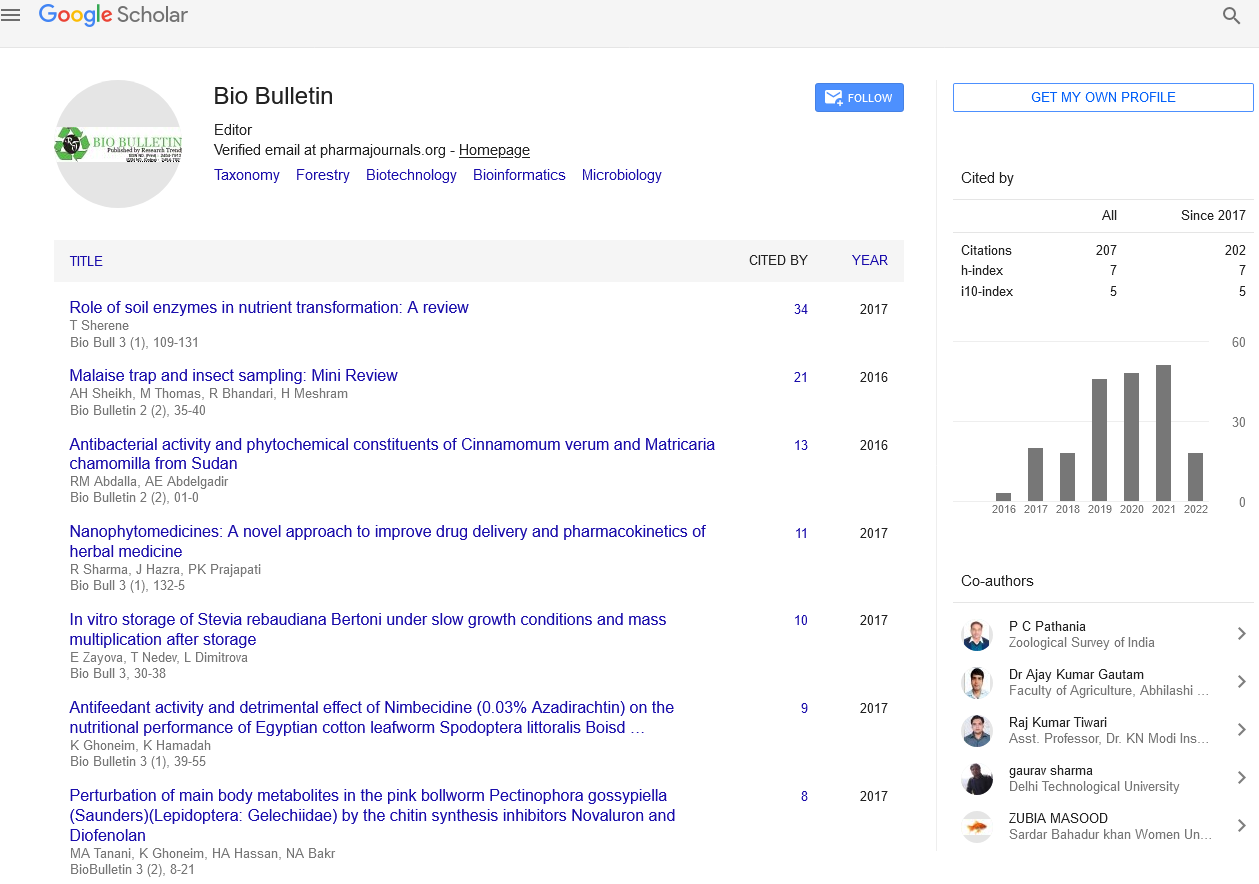Impact of Agricultural Management on Soil Processing and Functioning
Commentary - (2022) Volume 8, Issue 3
Description
Agricultural management has a significant impact on soil processes and functions. As a result of biophysical limits as well as rapid structural and technological advances, new management techniques are emerging, with largely unknown implications for soil processes and functions. This makes it difficult to assess the potential of such emergent techniques for sustainable intensification, a paradigm developed to handle rising demand for food and non-food goods. In terms of soil management, sustainable growth involves increasing soil productivity while maintaining or even improving other soil functions and services such as carbon storage and ecosystem habitat. Recent research challenges helps to understand better on how developing soil management approaches affect soil processes and functions.
Agricultural management is a field that deals with the science of food production. It is concerned with farming techniques, animal domestication, and food processing in general. Many agricultural vocations involve management, particularly on initiatives involving scientific disciplines and farm labour. Agricultural economics is used by farm management to obtain information on prices, markets, agricultural policy, and economic institutions such as leasing and credit. It also draws on plant and animal sciences for knowledge on soils, seed, and fertiliser, weed, pest, disease control, and feeding and breeding, as well as agricultural engineering provides information on farm buildings, machinery, irrigation, crop drying, drainage, and erosion control systems.
With the shifting dynamics of global food production, agricultural management has become one of the world's fastest expanding fields. As farms vary so greatly, the primary focus in farm management is the specific individual farm; the plan that works best for one farm may be the worst for another. Farm management issues range from small, near- subsistence and family-run farms to large-scale commercial farms with professional managers and cutting-edge technology, and from farms managed by sole proprietors to farms managed by the state.
Soil management practises are classified into four types that include spatial arrangements of cropping systems, crops and rotations, mechanical pressures, and inputs into the soil. Nutrient efficiency in agroforestry versus conventional cropping systems, soil-rhizosphere microbiome elucidation to understand the interacting roles of crops and rotations, the effects of soil compaction on soil-plant-atmosphere interactions, and the ecotoxicity of plastics, pharmaceuticals, and other pollutants introduced into the soil are among the key research needs identified for each type. An interdisciplinary, systemic approach is needed to be followed for soil science, incorporating cross-cutting research activities such as process modelling, data management, stakeholder interaction, sustainability assessment, and governance.
The identification of soil research concerns from an agricultural management perspective allows collaboration between diverse scientific disciplines in the territory of sustainable agricultural production. Water re-allocations across sectors and large movements away from agriculture will need to be complemented by improvements in water usage efficiency and water delivery systems.
Conclusion
Improving agricultural water use efficiency will also rely on connecting improvements to the primary system (off-farm) with suitable incentives for on-farm investments aimed at improving soil and water management. Such choices will necessitate enhanced water delivery infrastructure to offer adequate on-demand service, as well as the deployment of modern technologies (such as soil moisture sensors and satellite evapotranspiration data) to improve agricultural water efficiency and production. The water movement have to be both real and virtual. Physical water movement can occur as a result of changes in the initial allocations of surface and groundwater resources, primarily from agricultural to urban, environmental, and industrial uses. Water can also move virtually as the production of waterintensive foods, goods, and services is concentrated in water-rich areas and traded to water-scarce areas.
Author Info
Fengzhi Liu*Citation: Liu F (2022) Impact of Agricultural Management on Soil Processing and Functioning. Bio Bulletin, 8(3): 05-06.
Received: 23-Aug-2022, Manuscript No. BIOBULLETIN-22-77661; , Pre QC No. BIOBULLETIN-22-77661(PQ); Editor assigned: 26-Aug-2022, Pre QC No. BIOBULLETIN-22-77661(PQ); Reviewed: 09-Sep-2022, QC No. BIOBULLETIN-22-77661; Revised: 16-Sep-2022, Manuscript No. BIOBULLETIN-22-77661(R); Published: 23-Sep-2022, DOI: 10.35248/2454-7913.22.8.100
Copyright: This is an open access article distributed under the terms of the Creative Commons Attribution License, which permits unrestricted use, distribution, and reproduction in any medium, provided the original work is properly cited.

